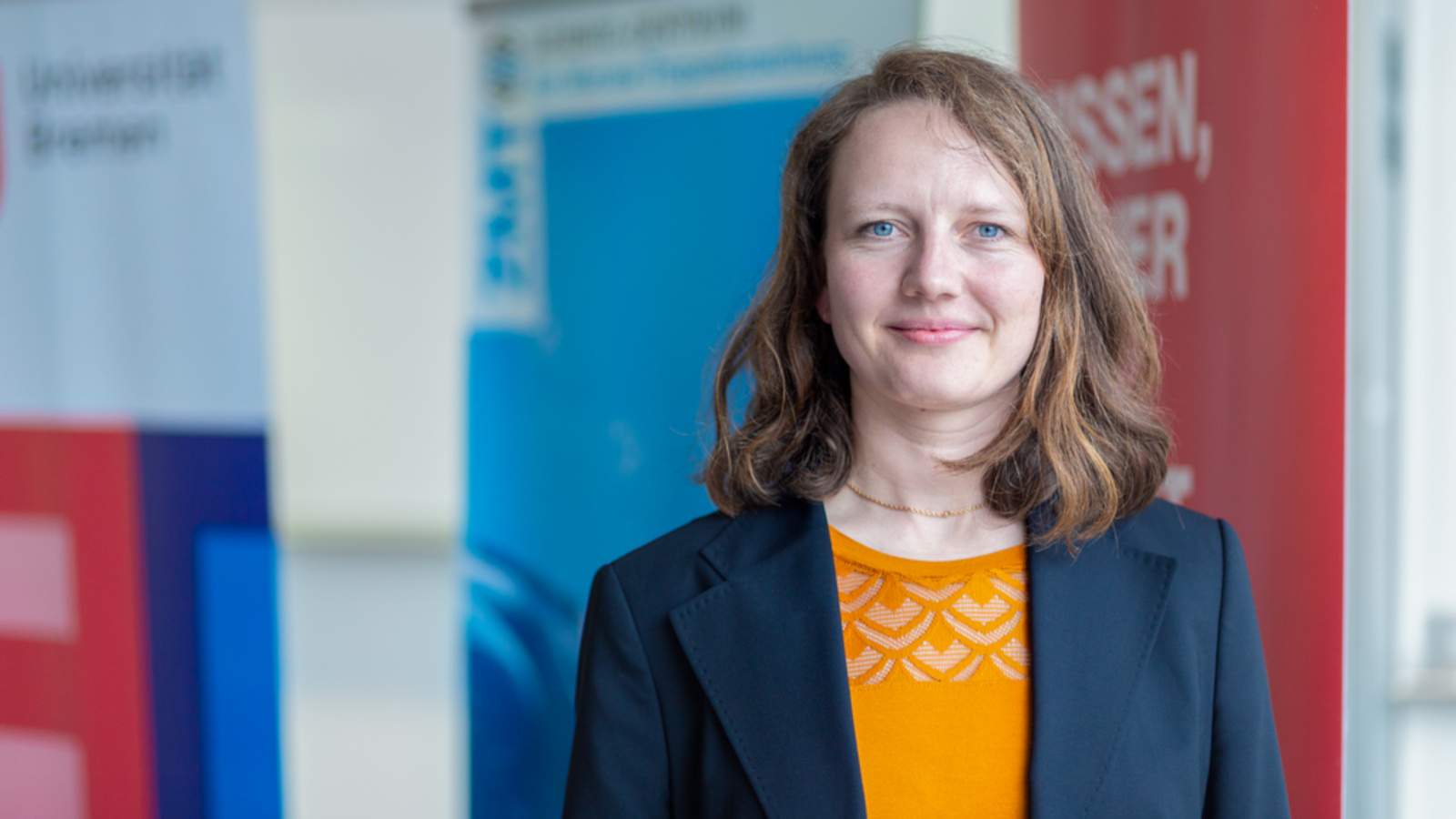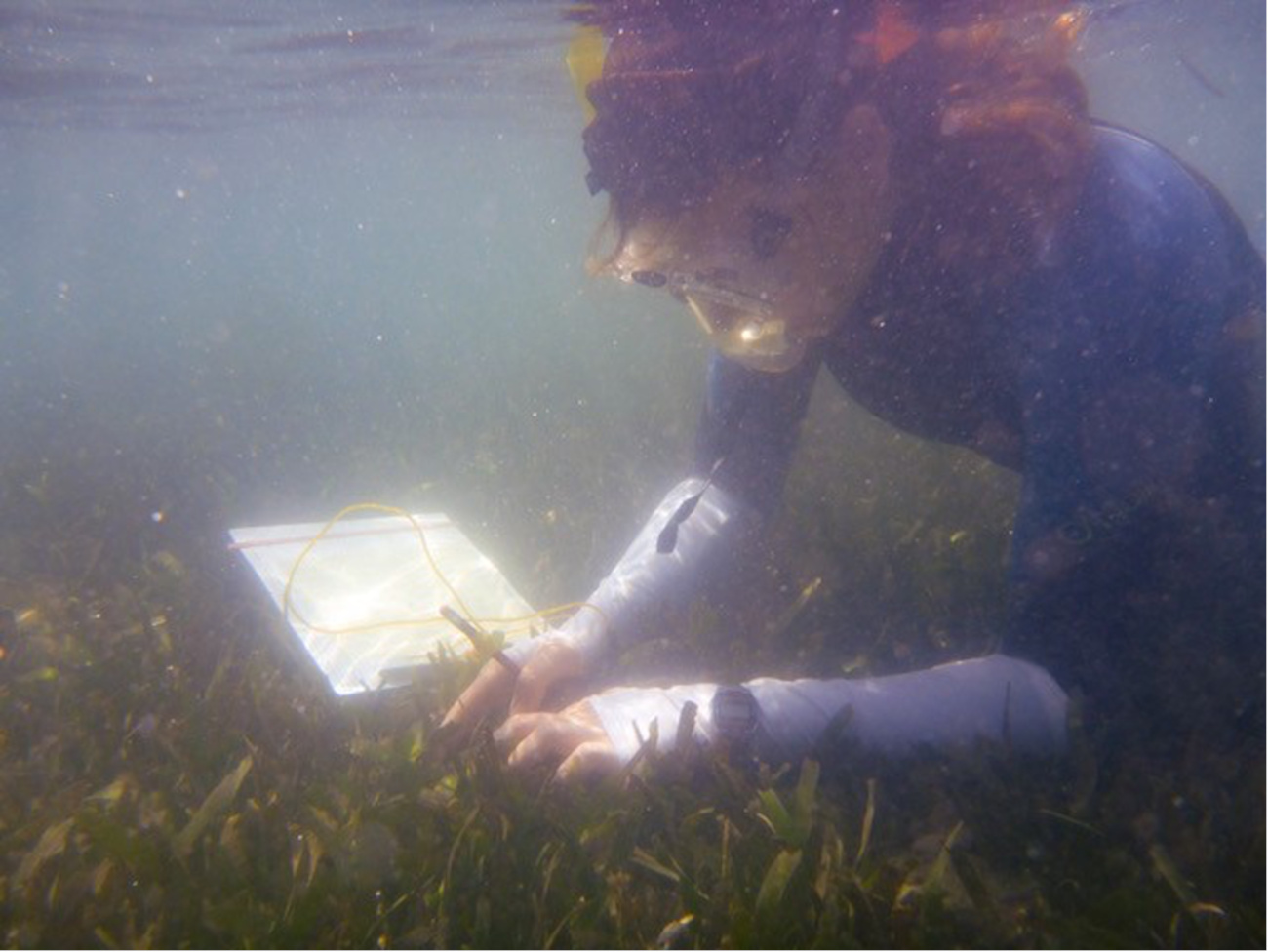
© Matej Meza
Commitment to Seagrass Beds: Biologist Investigates Important Ecosystem
Esther Thomsen receives this year's CAMPUS AWARD for her dissertation.
Esther Thomsen has studied seagrass beds intensively. For her dissertation, she studied the effects of aquaculture, which is practiced on a large scale not only in Asia, on the ecosystem of seagrass meadows on the island of Hainan in China. Seagrasses are grasses that grow in shallow coastal seas. She received the “CAMPUS AWARD: Research for a Sustainable Future” for her work, which is presented once a year by the KELLNER & STOLL FOUNDATION FOR CLIMATE AND ENVIRONMENT, the Leibniz Centre for Tropical Marine Research (ZMT), the University of Bremen, and the University of Bremen Alumni Network.

© Kailin Mao
How did you become interested in the topic? What fascinated you about it?
I have always been interested in how our activities on land affect ecosystems in the sea. Since seagrass beds are found in shallow coastal waters, they are often the first ecosystems into which our wastewater is discharged.
I was particularly interested in the issues surrounding aquaculture wastewater because aquaculture production is growing rapidly across the globe. In the Hainan region, however, this growth had already largely been completed, as nearly all suitable land was already covered with aquaculture ponds in 2016. Hainan is ahead of this trend and allowed us to look into the potential future of seagrass beds in the region.
Has the importance of seagrass beds as an ecosystem been underestimated?
Absolutely. Interest in seagrass meadows and their ecosystem functions is slowly growing, though at the moment most of the interest is focused on the function of long-term carbon storage in the sediment of seagrass beds. Buzzword: “blue carbon.” Other important functions of seagrass beds, such as the role of them as nitrogen filters or as nursery grounds for juvenile fish, still receive too little attention.
What is life like on the island?
Hainan is a fascinating island. The capital, Haikou, is a modern city of millions, and high-rise housing estates are being built along the coasts, especially for wealthy Chinese tourists. In many places, artificial islands are being established off the coast. Modern express trains connect the cities. In between there are rice fields, the coasts are lined with aquaculture ponds, and many people live here in simple conditions.
What are your findings?
The uncontrolled discharge of untreated wastewater from aquacultures leads to overfertilization (eutrophication) of coastal waters and damages seagrass beds. In particular, the high nutrient concentrations in the wastewater and the turbidity caused by organic material lead, among other things, to a lack of light for the plants. This initially changes the species composition and the seagrass beds slowly decline. These shifts reduce the nitrogen filtering function of the seagrass beds, which results in even poorer water quality and further death of the seagrass beds.
What is that threshold you calculated?
I calculated a nitrogen threshold as an indicator of overfertilization. If the concentration is above this threshold, the plants are stressed and will be damaged over a longer period of time. This means we can intervene before the seagrass beds are permanently damaged.
What was the next step?
We presented our results on site to the government representatives, environmental organizations, aquaculture operators, and other researchers who were present.
After completion of our German-Chinese research project “ECOLOC,” some aquaculture ponds were deconstructed with the aim of replanting mangroves. It will take several decades until a mangrove forest is established. Furthermore, our colleagues have started a research project to test different methods to reestablish seagrasses. There have also been legislative changes. All new aquaculture facilities must now compulsorily treat their wastewater before it is discharged into coastal waters. However, I cannot exactly estimate what influence our research results had on these decisions.
As part of our accompanying or follow-up project to ECOLOC, “TICAS,” a workshop was held where we discussed local seagrass beds, their functions, and our research results with local environmental organizations and also visited the seagrass beds.

© Lena Wawrschin
Theme of the Month: Sustainability
Since its foundation in 1971, the University of Bremen has been committed to social responsibility. Climate protection and sustainability are fundamental principles guiding the university: in research, teaching, and operations. For this reason, up2date., the University of Bremen online magazine, will focus on the topic of sustainability in May. The theme of the month explores current projects, issues, and challenges.